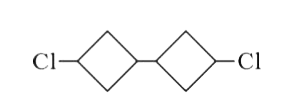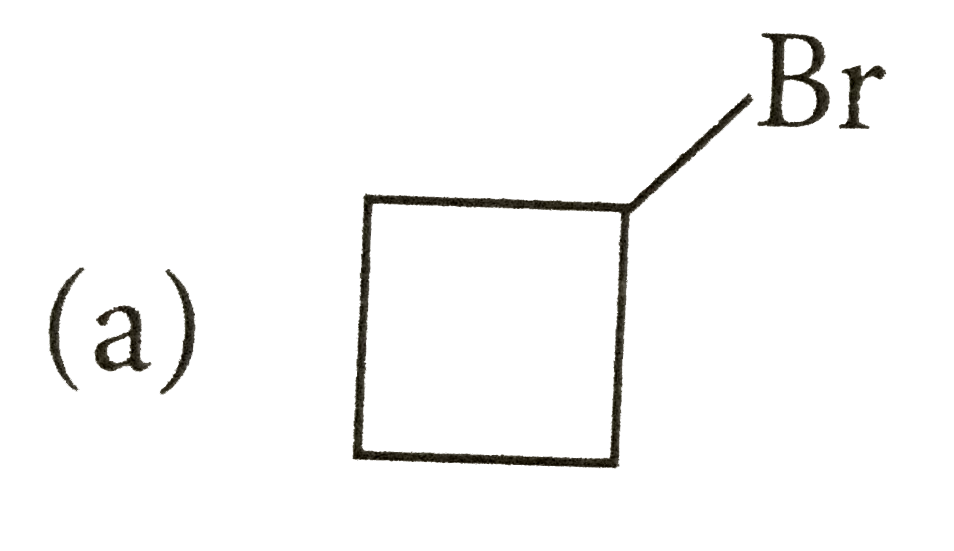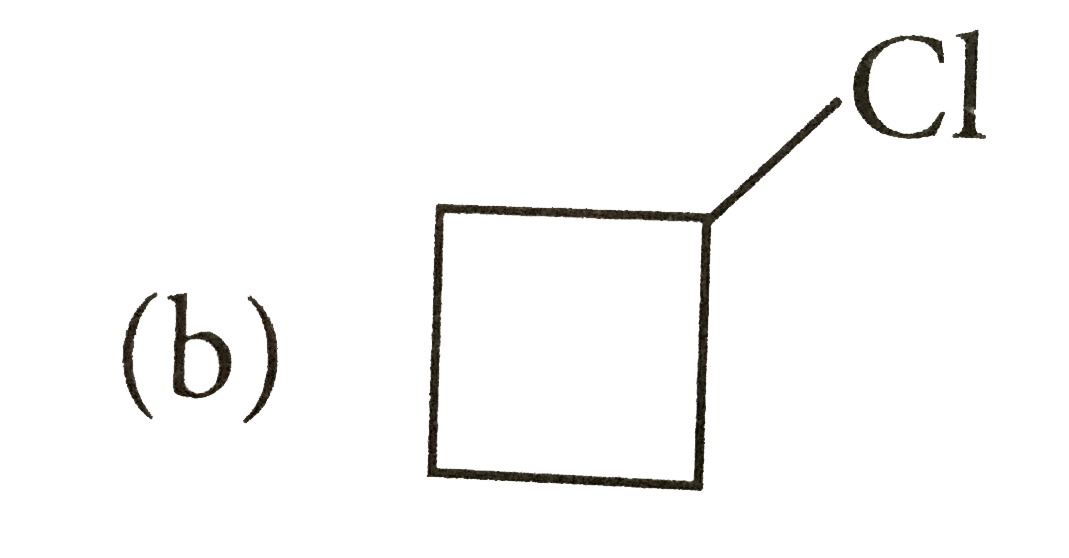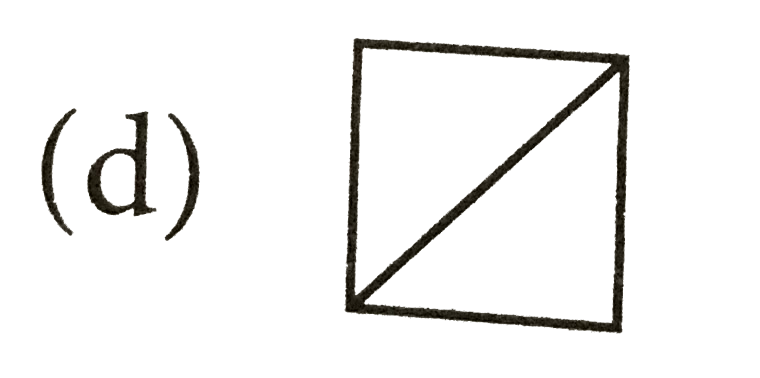1-bromo-3-chlorocyclobutane when treated with two equivalents of Na, in the presence of ether which of the following will be formed ?




The correct Answer is:D
To solve the question regarding the reaction of 1-bromo-3-chlorocyclobutane with two equivalents of sodium in the presence of ether, we can follow these steps:
1. Identify the Reactants:
- The compound is 1-bromo-3-chlorocyclobutane. It has a bromine atom at the 1-position and a chlorine atom at the 3-position on the cyclobutane ring.
2. Understand the Reaction Conditions:
- The reaction involves treating the compound with two equivalents of sodium (Na) in the presence of ether. This suggests a coupling reaction, likely a Wurtz reaction, where sodium is used to couple two halogenated compounds.
3. Mechanism of the Reaction:
- Sodium will react with the halogens (bromine and chlorine) to form radicals. The sodium will remove the halogen atoms from the cyclobutane, generating radicals.
- The radicals can then couple together to form a new carbon-carbon bond.
4. Formation of the Product:
- In this case, the radicals generated from the removal of bromine and chlorine can couple together. Since there are two halogen atoms, the coupling can lead to the formation of a dimer.
- The product formed will be bicyclo(1.1.0)butane, which is a bicyclic compound formed by the coupling of the two radical centers.
5. Final Product:
- Therefore, the final product of the reaction of 1-bromo-3-chlorocyclobutane with two equivalents of sodium in ether will be bicyclo(1.1.0)butane.
- The compound is 1-bromo-3-chlorocyclobutane. It has a bromine atom at the 1-position and a chlorine atom at the 3-position on the cyclobutane ring.
- The reaction involves treating the compound with two equivalents of sodium (Na) in the presence of ether. This suggests a coupling reaction, likely a Wurtz reaction, where sodium is used to couple two halogenated compounds.
- Sodium will react with the halogens (bromine and chlorine) to form radicals. The sodium will remove the halogen atoms from the cyclobutane, generating radicals.
- The radicals can then couple together to form a new carbon-carbon bond.
- In this case, the radicals generated from the removal of bromine and chlorine can couple together. Since there are two halogen atoms, the coupling can lead to the formation of a dimer.
- The product formed will be bicyclo(1.1.0)butane, which is a bicyclic compound formed by the coupling of the two radical centers.
- Therefore, the final product of the reaction of 1-bromo-3-chlorocyclobutane with two equivalents of sodium in ether will be bicyclo(1.1.0)butane.
Topper's Solved these Questions
Similar Questions
Knowledge Check
- Question 1 - Select One
When 1-bromo-3-chlorocylobutane is treated with two equivalents fo Na, in the presence of ether which of the following will be formed?
A B
B C
C D
D
- Question 2 - Select One
When 1-bromo-3-chlorocylobutane is treated with two equivalents fo Na, in the presence of ether which of the following will be formed?
A B
B C
C D
D
- Question 3 - Select One
1-Bromo-3-chlorocyclobutane is treated with two equivalents of Na, in the presence of ether. Which of the following compounds will be formed.
A B
B C
C D
D
 when treated with two equivalents of sodium in dry ether gives: View Solution
when treated with two equivalents of sodium in dry ether gives: View Solution2-Brumo butane when treated with Na in the presence of dry ether gives
View SolutionEthene when treated with Br2 in the presence of CCI4 which compound is formed
View SolutionEthene when treated with Br2 in the presence of CCl4 which compund is formed
View SolutionWhen ethyl iodide and propyl iodide react with Na in the presence of ether, they form
View Solution

